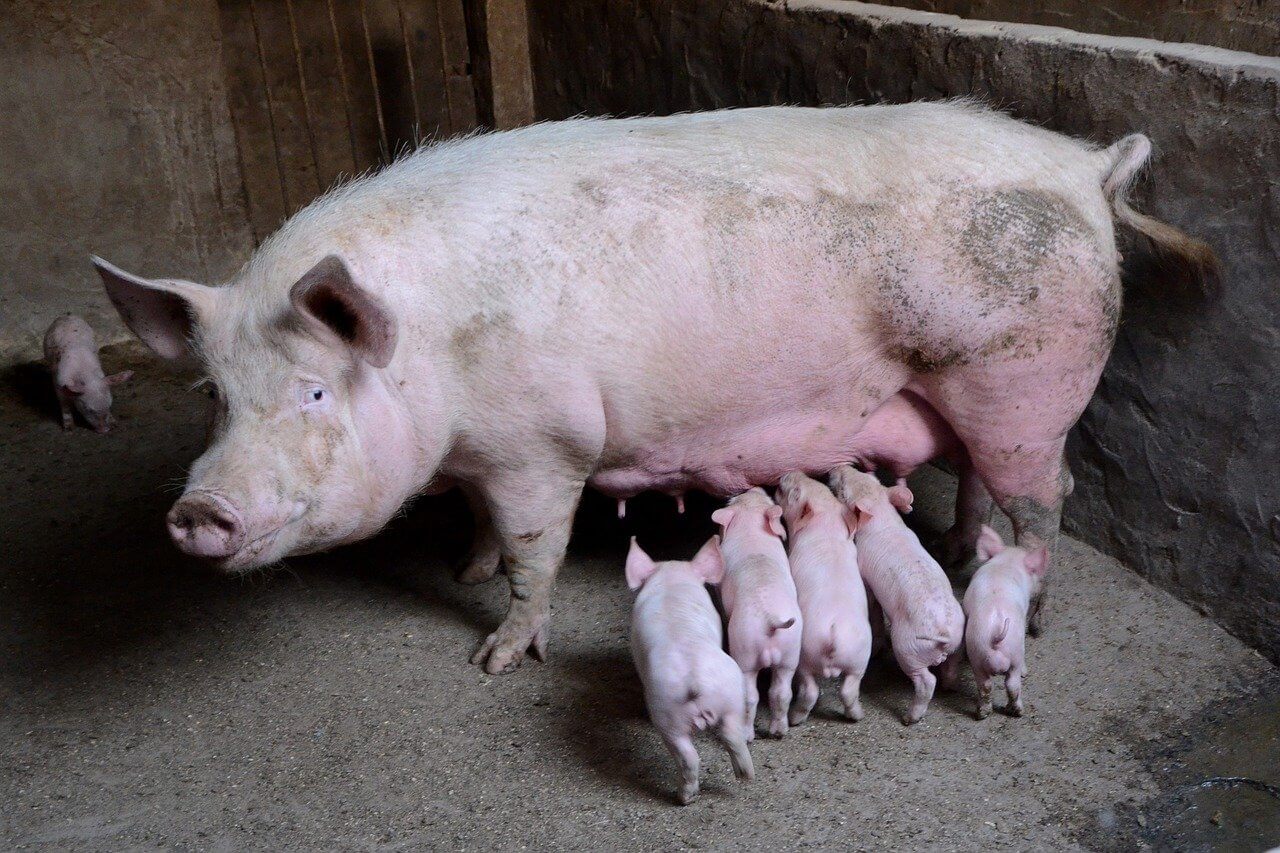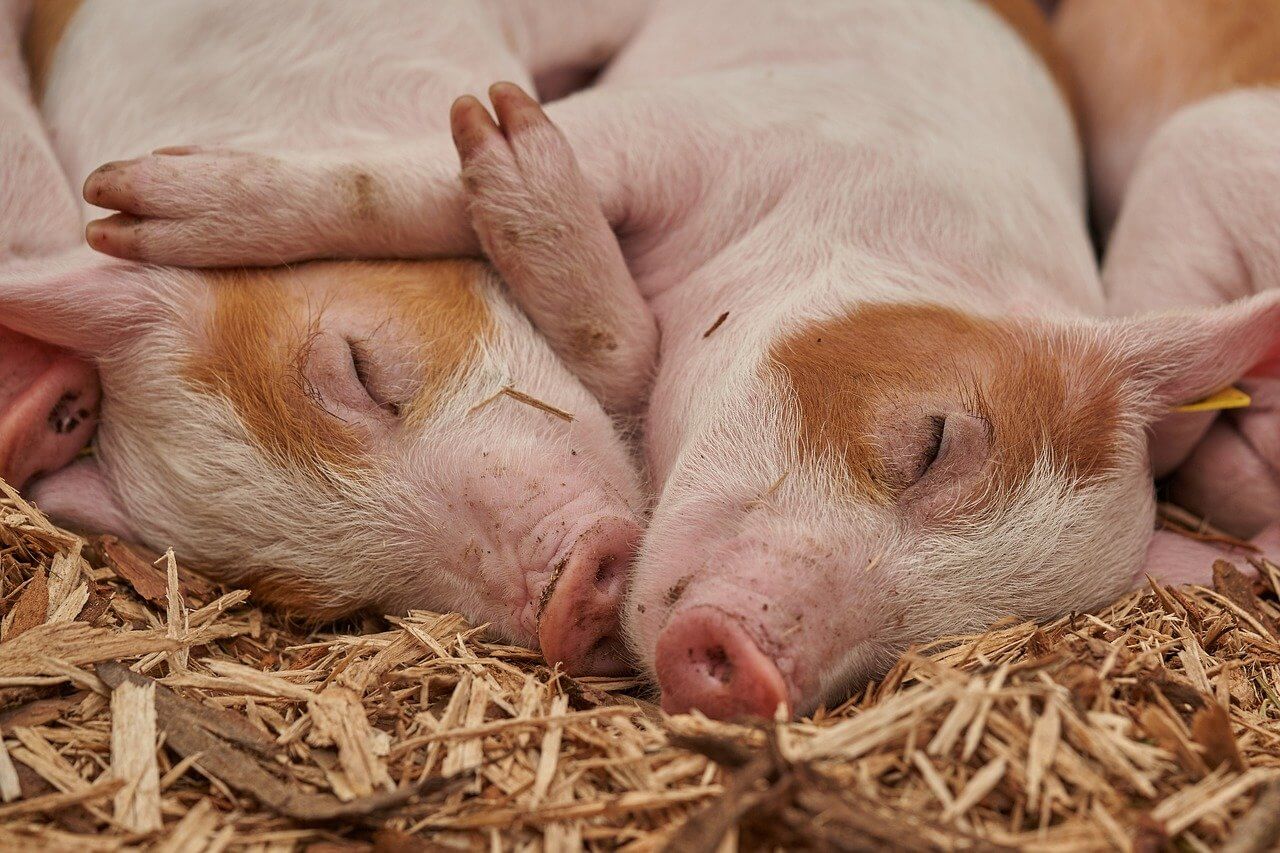If you’re thinking about raising hogs for meat, your first step should be to consider the best fencing for pigs both to keep them contained and to allow them to be the most comfortable. Pigs are skilled escape artists – even more so than goats – so continue reading to learn everything you need to know to build a pig-proof enclosure.
What You'll Learn Today
What Fencing Do I Need for Pigs? Your Options

When you’re deciding what kind of fencing to install for pigs, you need to consider a few factors. For one, pigs are nimble escape artists – they can get out of just about any type of fence, especially if they’re bored.
Not only that, but pigs produce a lot of stench, as you’ve likely gathered, so moving them often or keeping them in a larger paddock is key to keeping things mostly fragrance-free.
When you’re deciding which kind of fence to use, you’ll need to consider how many pigs you plan to keep, how much space you have and how often (or even if) you plan to move them.
Woven Wire, Welded Wire, or Hog Panels
For the farmer who has no interest in moving his pigs, a permanent wire fence is probably the most economical option since you won’t have to pay to energize a fence. You can use woven wire, welded wire, or hog panels to build your pig pen.
That said, it’s only economical if you’re keeping your pigs in a small area.
This will allow you to keep your pigs in a relatively small enclosure. However, it’s important to note that using woven wire or some other kind of permanent fence for your pigs in a small area will result in the entire area being turned into mud in a matter of days.
This is beneficial if you plan to use your pigs as rototillers with the goal of clearing and turning up ground that you want to plant into later. However, it can also lead to a bad case of erosion and internal parasites if you leave the pigs in this spot for too long.
If your land is limited, though, building a wire fence or a fence out of some other permanent material is the best option. When raised in this way, pigs only need about ten square feet of space each.
You can use either metal T-posts or cedar fence posts (or some other type of sturdy, rot-resistant material) to post your fence into the ground. Pigs can’t leap or jump, so your fence only needs to be about three feet high. Make sure it’s posted securely to the ground so they can’t root underneath it.
Three-Strand Electric
If you want to give your pigs a bit more room to roam, electric fencing will allow you to enclose your pigs in a larger pasture. Three-strand electric is probably the cheapest way to house pigs over a large area because you’ll divide the cost of the energizer and electricity for the fence out over a larger area of distribution.
Plus, you’ll be able to give your pigs more space. They can spread out their manure more, which will fertilize your land without totally eroding it. The key to raising pigs in this way is to create multiple sub-paddocks within your main pigpen. Through rotational grazing, you can rotate your pigs to new areas as soon as the current pasture gets churned up and muddy.
They won’t get a ton of nutrition from the grass, but pigs will eat grass, brush, and other debris so you can use them to clear more rugged areas as well.
Here’s a video that shows you how to build a simple electric fence that allows for easy and fast pasture rotation:
If you decide to go with electric fencing, consider using several strands of electric (at least three). That way, you will be able to keep pigs contained at all levels – they won’t be able to root under, walk through, or climb over your electric fence.
You will also need to leave a non-electrified gate through which pigs enter and leave the pen. Otherwise, you may have trouble moving them, since they’ll have a fear of the electric fence and won’t cross an area where the electric has crossed before.
Electric Netting
Electric netting is a great option for young piglets, though it’s probably not the best for older, full-sized pigs. They’ll run right through it!
However, it serves as a wonderful introduction to an electric fence, teaching piglets what an electric fence is when they’re still small and may be able to fit through the gaps in a traditional three-strand electric fence.
You can teach the piglets to respect the electric netting as young piglets. To help them make the switch to the regular electric fence more easily, consider tying flagging on both fences so they understand these similarities.
How Do I Build a Pig Proof Fence?
There are a few tips to keep in mind when you’re building your pig fencing.
For one, pigs are extremely smart. Although they will learn quickly to respect an electric fence (whether that’s a few strands of electric wire or woven wire fencing with a single strand of hot wire around the interior perimeter), they will also quickly take on when a fence is not active.
Because of this, it’s important to inspect your fence regularly. If it’s an electric fence, look for spots where it may have shorted out – if it’s a woven wire, welded wire, or hog panel fence, look for spots where the pigs have rooted up a potential exit point.
If you use an electric fence, make sure you have a strong energizer – at a minimum 2 joules, but 6 joules is even better if you can afford it.
How Do You Keep Pigs from Rooting Under a Fence?
There are a few ways to prevent pigs from rooting underneath a fence.
The easiest is to dig a trench beneath the existing fence. Install some sort of barrier in the trench and fasten it where the top of the underground barrier and the bottom of the existing fence come together.
What should you use for your barrier? The choice is up to you (and to your budget) but some good options include pressure-treated wood, woven wire, and concrete. Of course, a low-lying strand of electric fencing is always an option, too, but keep in mind that pigs can push mud and debris up against this strand and cause it to short out.
How Much Space Do You Need for 2 Pigs?

For growing pigs, it’s recommended that you allot for about eight square feet of space per pig. This might seem like a relatively small amount of space – and it is. If you can give your pigs more room, that’s better.
Although pigs aren’t very active animals, they do produce quite a lot of manure. The more space you have for them to spread it out, the better.
Keep in mind that adult sows and boars may need more space than what young growing pigs require. It’s best to figure out how much space your pig needs by weight rather than by approximation.
For example, the University of Illinois recommends that pigs that are 14 to 30 lbs get 1.7 to 2.5 square feet of space while those that are 150 lbs or higher get the minimum of 8 square feet.
Giving your pigs more space to roam is advantageous in that it can reduce the likelihood of disease and parasitic infections.
So the moral of the story is this: give pigs plenty of room and make sure they’re contained within a sturdy, well-respected fence. If you follow these two golden rules of raising pigs, you’ll have very little to worry about!
Curious to know, if 14 gauge welded wire fencing 5” will work for a hog pen that 25” x 60” ? Was thinking of splitting 5” hog panels in half and lining the walls of the inclosure 2 1/2 “ from the ground up against the 5” 14 gauge wire fencing as well for extra reinforcements.. I believe this will work what is your opinion?